
Chrysoberyl Gemstone: Properties, Meanings, Value & More
 Chrysoberyl gemstones are strong, transparent crystals with varied colors, but most often honey-gold to pale green. The proper chrysoberyl pronunciation is kri-suh-beh-ruhl.
Chrysoberyl gemstones are strong, transparent crystals with varied colors, but most often honey-gold to pale green. The proper chrysoberyl pronunciation is kri-suh-beh-ruhl.
Is chrysoberyl a precious stone? No, but chrysoberyl is harder than emerald, a precious gemstone in the beryl family. Speaking of, let’s shed some light on chrysoberyl vs. beryl.
Their names are similar, but chrysoberyl and beryl are different. Both have beryllium and aluminum, but beryl is a silicate, while chrysoberyl is an oxide.
Overall, chrysoberyl is known for its soft yellowish hues and ability to change colors or show a “cat’s eye” in certain varieties.
In this guide, you’ll learn what makes each chrysoberyl variety unique and valuable, along with chrysoberyl gemstone properties, healing uses, and more!

About Chrysoberyl Stone
Chrysoberyl may go by other trade names like “oriental chrysolite” or “Ceylonese chrysolite,” a golden-yellow type from Ceylon (present-day Sri Lanka). However, chrysolite now exclusively refers to peridot.
If you know about chatoyancy, the “cat’s eye” effect, you know many gems can display it. But which cat’s eye stone is best? Easy — chrysoberyl!
The “chrysoberyl cat’s eye” is so well-established, only a chatoyant chrysoberyl gem can be labeled as simply “cat’s eye gemstone.” For instance, you wouldn’t label a chatoyant apatite “cat’s eye gemstone” — you’d say “cat’s eye apatite.”
Chrysoberyl is a zodiac stone for Virgo, and its color-changing variety alexandrite is a June birthstone. Alexandrite is also the traditional gemstone to commemorate the 55th wedding anniversary! Younger couples can celebrate their 18th wedding anniversary with the traditional chrysoberyl cat’s eye gemstone as well.
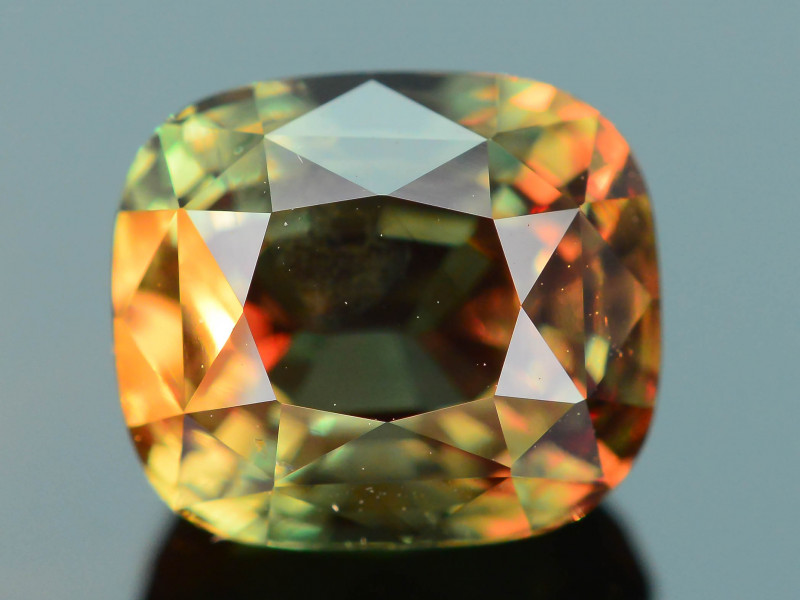
Chrysoberyl Specifications & Characteristics
Chrysoberyl is composed of aluminum, beryllium, and oxide. Iron is a common impurity in normal chrysoberyl, while chromium is present in alexandrite and cymophane (which we’ll cover in a bit).
How can you tell if chrysoberyl is real? The simplest criteria is hardness.
Chrysoberyl is very scratch-resistant, ranking at 8.5 on the Mohs mineral hardness scale. In fact, chrysoberyl is the third-hardest natural gemstone!
Therefore, you can use topaz (8-level hardness) for a scratch test. If it's a softer substitute for chrysoberyl, like quartz, topaz will scratch it.
Find the remaining chrysoberyl properties below:
Color: Typically pale yellow or yellow-green, sometimes green, brown, or orange (chrysoberyl); Honey-brown, golden-yellow, greenish-yellow, or green (cymophane); Reddish-purple, pink, or ruby-red & bluish-green, blue, or emerald-green (alexandrite); Mint green or blue-green (vanadium)
Crystal structure: Orthorhombic
Luster: Vitreous (glass-like)
Transparency: Translucent to transparent
Refractive index: 1.74-1.76
Density: 3.50-3.84
Cleavage: Distinct on [110], imperfect on [010], poor on [001]
Fracture: Irregular/uneven or conchoidal
Streak: White
Luminescence: Rarely for green chrysoberyl: Weak fluorescence in yellow-green under SW-UV
Pleochroism: Present, weak; Orange-red, orange-yellow, and emerald-green
Optical effects: Chatoyancy & rarely asterism (cymophane); Color-change (alexandrite)
Chrysoberyl is a gemstone family with many types of stones. So, what gemstones are chrysoberyl?
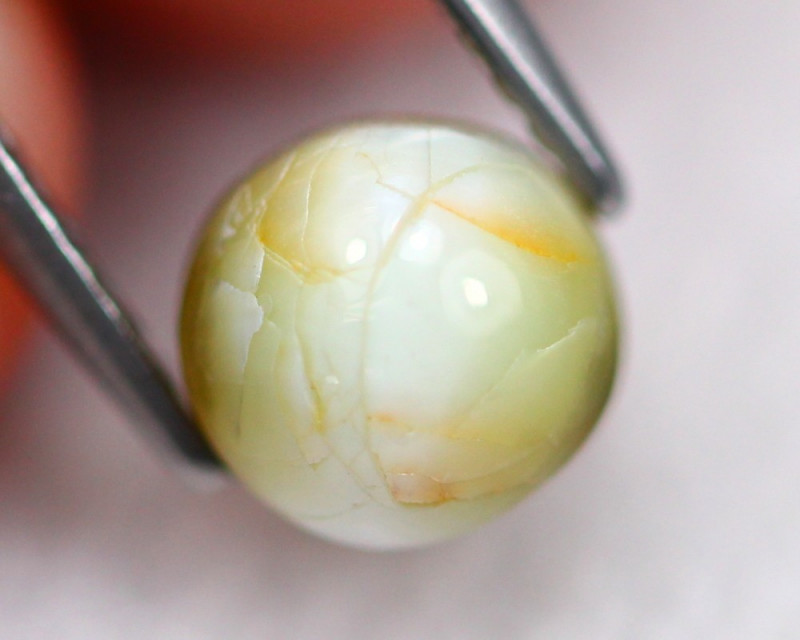
Types of Chrysoberyl
There are four main types of chrysoberyl: normal (yellow to green), cymophane (cat’s eye), vanadium, and alexandrite. What is the rarest chrysoberyl? That would be alexandrite chrysoberyl, the first on our list below!
Alexandrite: Rarest chrysoberyl variety that comes from Russia and displays strong, green to red changes in color in natural and artificial light, respectively.
Vanadium: Rare chrysoberyl variety from Tanzania in bluish-green or mint.
Cymophane (Cat’s Eye): Honey-brown to green, often cloudy chrysoberyl variety known for the strong ray of bluish or yellowish reflective light on its surface dubbed a “cat’s eye.”
Ordinary Chrysoprase: Standard yellow to yellow-green variety of transparent to translucent chrysoprase faceted into gemstones.
You know which forms it can take, now what does chrysoberyl symbolize?
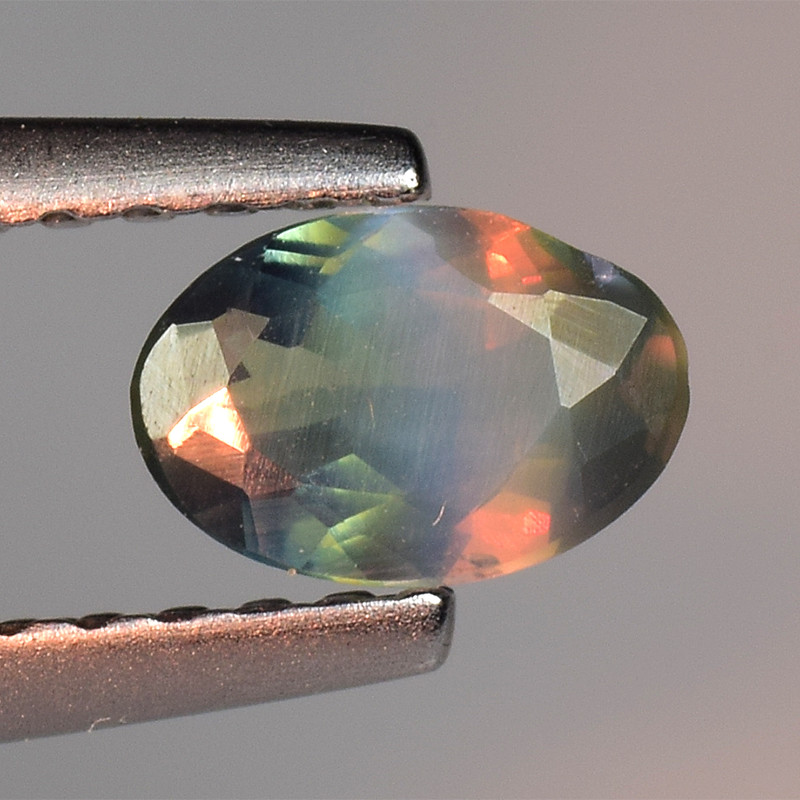
Chrysoberyl Meaning & History
Chrysoberyl symbolizes balance, patience, and endurance. Other interpretations of chrysoberyl’s crystal meaning connect it to ingenuity, prosperity, and recognizing one’s inherent talents.
The crystal also has significance in Hindu mythology. Vishnu is one of the three primary Hindu deities, known for protecting the universe and preserving the balance of good and evil. Chrysoberyl’s spiritual meaning here comes from its place on Vishnu’s necklace as the Kaustubha gemstone, said to induce a state of “pure consciousness” similar to Buddhist enlightenment.

History
Renowned German mineralogist, Abraham Gottlob Werner, first officially discovered chrysoberyl in 1792. Werner named the stone from the Greek terms chrysos meaning “gold” and beryllos, meaning “beryl” or “beryllium.”
Cymophane’s name came around 1804. It comes from the Greek kyma for “wave” and the French phane for “appearance,” referencing its hazy reflection and internal glow (called adularescence).
Chrysoberyl uses date back to ancient times, believed to protect one from catastrophic events. In Asia, folks have worn cat’s eye chrysoberyl for millennia to ward off the evil eye, a malicious glare thought to cause misfortune or harm on the receiver.
The name “chrysolite” applied to chrysoberyl (among other green gems) for centuries. English author Robert Burton’s 1624 work, The Anatomy of Melancholy, reflects early beliefs on chrysoberyl’s metaphysical properties with the name chrysolite: “the chrysolite, a friend of wisdom, an enemy to folly.”
Shifting to present-day, what does chrysoberyl crystal do now?
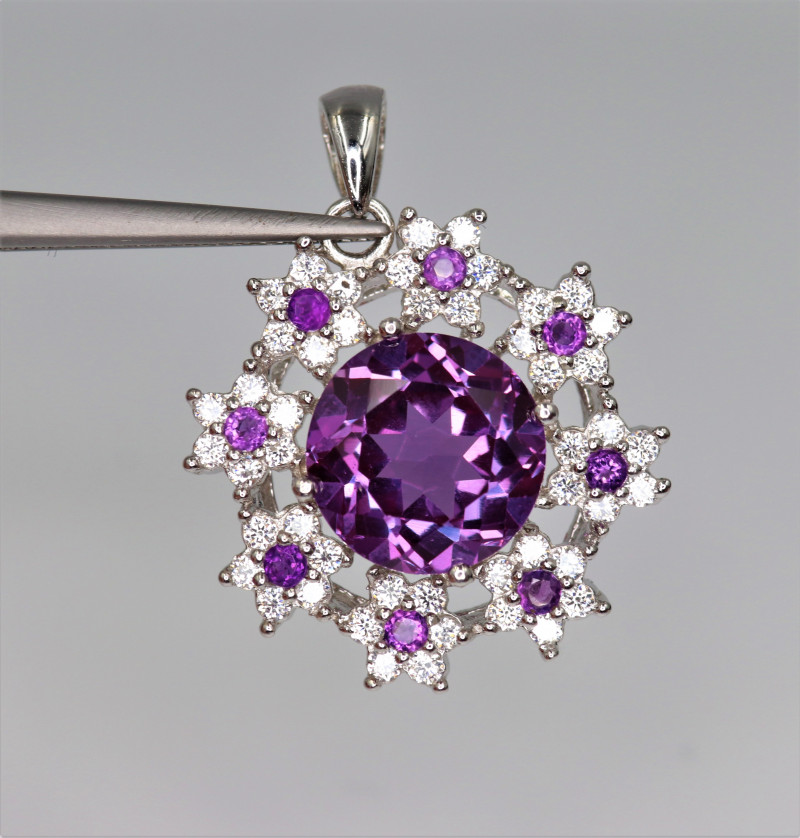
Chrysoberyl Healing Properties
A gemstone’s color, energies, and symbolism grant it use as a healing crystal. Along with other green gems, green chrysoberyl brings wealth, growth, and good luck. Yellow chrysoberyl, like all yellow crystals, inspires greater confidence, focus, and joy.
Some crystal healers call cymophane the “Stone of Self-Control” and use it for increasing self-discipline and prudence. Below, we’ll highlight even more ways to use chrysoberyl!
Physical Healing
Physically, chrysoberyl crystal benefits purportedly help with heart disease or any negative effects of stress on the heart. The crystal is also said to balance hormones like adrenaline, along with strengthening the heart and liver.
Emotional Healing
Chrysoberyl is said to bring its wearer empathy, acceptance, and forgiveness, for the self and others. If you’re making a difficult decision but feel overwhelmed by emotions, the crystal can ease your mind and help you see the true pros and cons of either choice.
Additionally, chrysoberyl stone benefits anyone struggling with self-doubt by boosting feelings of self-worth. Are you creative? This crystal can empower you to create with confidence, enhancing your imagination while giving you the discipline to keep going.
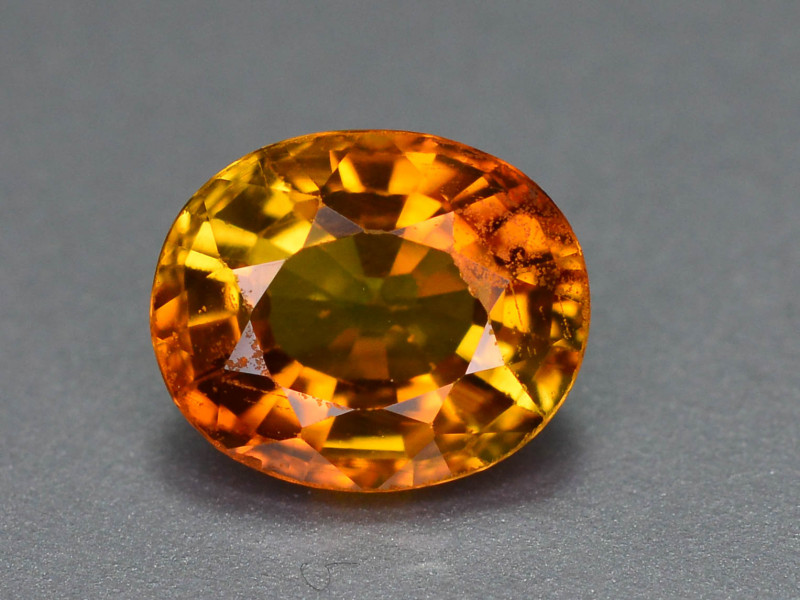
Chrysoberyl Gemstone Properties
Experts must examine a crystal’s specific gemstone properties to determine its value. Chrysoberyl’s value can differ from one variety to the next, especially alexandrite.
In most chrysoberyls, the important value traits are color, cut, clarity, and carat weight.
Color
The most common chrysoberyl colors are pale green to yellow or yellow-green, seen in normal chrysoberyl and cymophane. These hues come from traces of iron impurities. The red and green chrysoberyl, alexandrite, gets its color from chromium, while the green vanadium is colored by… well, vanadium!
The most valuable cat’s eye color is honey or golden-yellow, due to the “milk and honey” effect seen as you turn the stone. Alexandrites with more intense color changes command the highest prices. For ordinary chrysoberyl, the best specimens have saturated green or yellow hues.
Cut
Chrysoberyl’s transparency often determines its cut. Transparent specimens will almost always be faceted, usually in round brilliant or step cuts with square or rectangular shapes.
Cat’s eye chrysoberyls must become cabochons to properly display their stunning optics. Gem cutters may turn non-chatoyant, translucent chrysoberyls into cabochons or carvings.
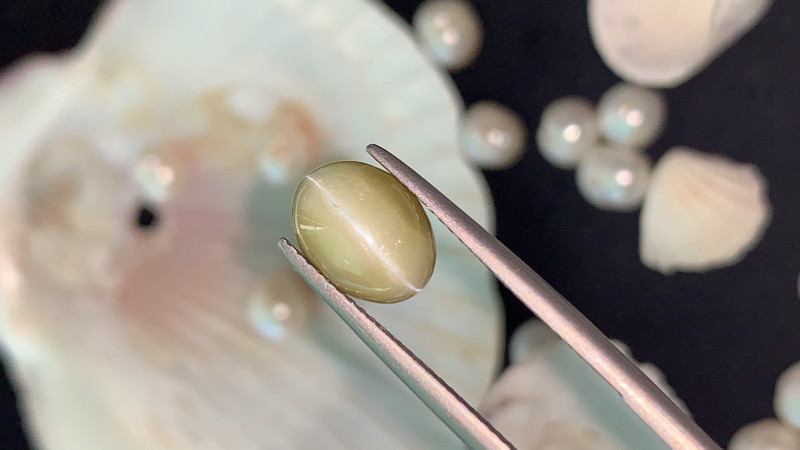
Clarity
Clarity grades describe the level of visible inclusions in a gem. Chrysoberyl has a Type Icolored gemstone clarity grade, meaning it’s either inclusion-free or only has inclusions visible under 10x magnification.
For most chrysoberyls, fewer inclusions means higher value. The only exception is cymophane gems, which rely on tiny, parallel rutile inclusions for their distinctive “cat’s eye” effect. Other common inclusions in chrysoberyl include goethite and actinolite.
Carat Weight
Gem-quality cymophane and ordinary chrysoberyl, raw, is often found in specimens weighing hundreds of carats. However, faceted chrysoberyls are usually under 40-50 cts — anything above this is rare and sought-after.
Treatments & Synthetics
Most chrysoberyls aren’t treated, except for dyeing, irradiation, or oil treatments rarely done on cymophane to improve its color.
Scientists create synthetic chrysoberyl in a few ways. One method for synthetic cat’s eye gems is flux growth, where you melt flux to dissolve materials into a solution that cools and gradually forms crystals.
Another common process is hydrothermal growth. This entails inducing the conditions of natural formation (heat and pressure levels) to form the crystal.
On that note, how does natural chrysoberyl form?

Chrysoberyl Formation & Sources
Chrysoberyl forms in granite, granite pegmatites, or metamorphic rocks containing beryllium. The crystal’s formation began millions of years ago in the Earth’s mantle.
Hot temperatures and high pressure in the outer mantle pushed hot magma up closer to Earth’s surface. Most of the magma gradually cooled, causing previously spread-out water to group together in the remaining liquid portions of magma.
As the water settled, it picked up other elements and minerals to form a solution, notably picking up beryllium from the molten magma and rocks nearby. As the water evaporated, the elements and minerals crystallized into chrysoberyl.
Magma and rocks with beryllium are exclusive to certain environments. So, where is chrysoberyl found?
Mining Locations
Certain chrysoberyl varieties only come from one place, like Tanzania’s vanadium and Burma’s rare, colorless chrysoberyl. Similarly, most alexandrite comes from Russia.
Sri Lanka and Brazil are the primary producers of ordinary chrysoberyl, but other sources include:
Australia
Austria
Bulgaria
China
Czechia
India
Madagascar
Myanmar
Pakistan
USA (Maine & New Mexico)
Zimbabwe
Of course, price is a major buying factor. How much is chrysoberyl worth?
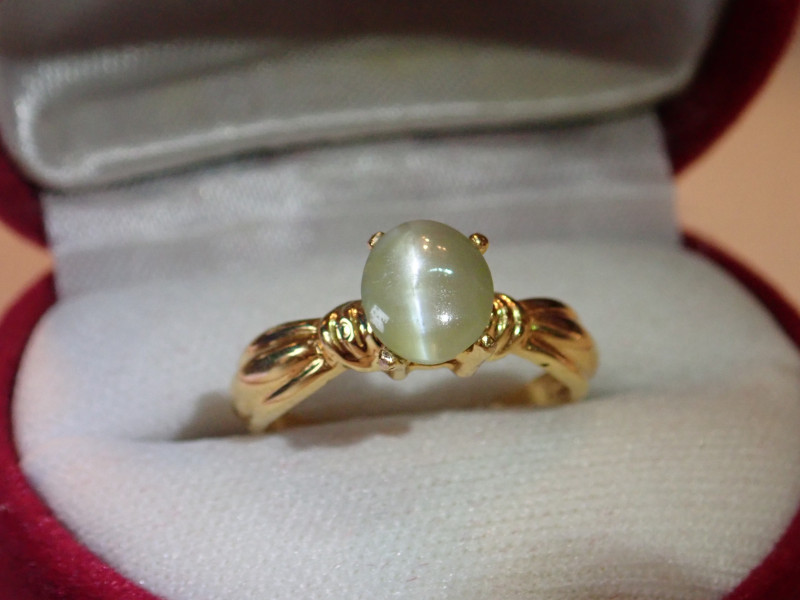
Chrysoberyl Price & Value
For faceted gemstones, chrysoberyl price per carat overall ranges from $20 per carat to over $2,000 per carat. Why is chrysoberyl so expensive? The price depends on the variety, along with its rarity.
As the rarest variety, alexandrite fetches $500-$100,000 per carat. Vanadium, also rare, is typically around $1,000 per carat.
Since not all chrysoberyls show a “cat’s eye,” those that do are more expensive.
Chrysoberyl cat’s eye cabochons range from $150-$1,000 per carat for yellow-green stones. Those with browner hues cost $60-$900 per carat, while saturated honey-colored options can reach nearly $2,000 per carat.
Ordinary chrysoberyl gemstone price is between $60-$500 per carat for yellow stones. Green chrysoberyls go for $40-$800 per carat. Saturated red-orange or honey-yellow gems are more valuable at $700-$1,000 per carat. Some lemon-yellow, Sri Lankan chrysoberyls can fetch upwards of $2,000 per carat.
The most affordable option is chrysoberyl rough at $40-$60 per carat.
Given its prices, you’ll want to ensure your chrysoberyl stays in top-shape as long as possible!
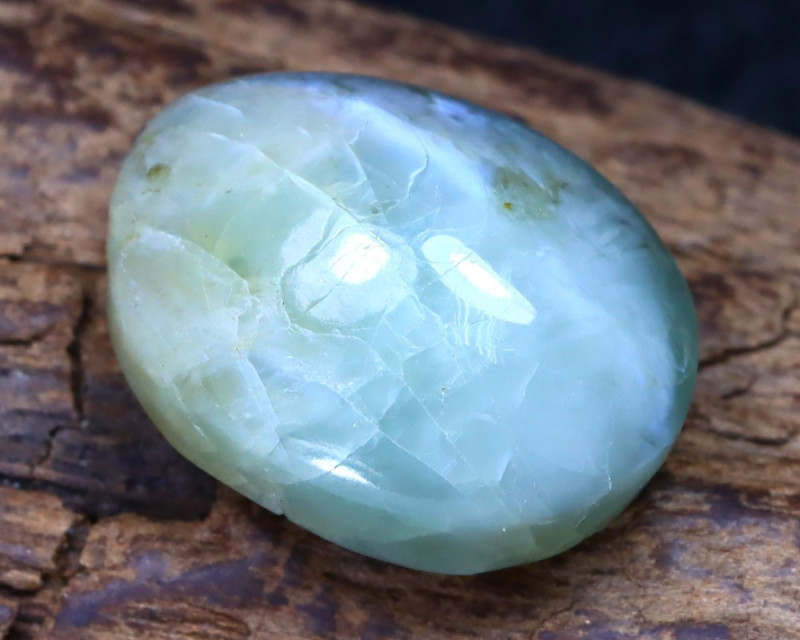
Chrysoberyl Care and Maintenance
The stone’s impressive hardness makes gemstone care for chrysoberyl easy.
The safest way to clean chrysoberyl is with warm, soapy water and a soft brush. However, most chrysoberyls are safe to go in steam or ultrasonic cleaners. Just remember to rinse any residue off the stone after.
Keep your chrysoberyl jewelry away from extreme heat and household chemicals like bleach. It’s best to store it separately from other gems.

Chrysoberyl: A Captivating Cut Above the Rest!
Chrysoberyl is a diverse stone, and each variety stands out. Cymophane is the best-known cat’s eye gem, while alexandrite shows the strongest color changes of any stone.
You can surprise your spouse with a chrysoberyl ring for your anniversary, use one to ignite your imagination, or simply wear it for its beauty. However you use chrysoberyl, it's sure to captivate you!
Search the Gemstone Encyclopedia
Related Auctions
Related Articles
Originally the Birthstones or gemstones were associated with a zodiac sign or the month of a individuals birth. Find out what your stone is and view the stones we have for sale
8th Feb 2021
There are dozens of quartz and chalcedony gems with various colors and patterns. Learn all about quartz properties and every type of quartz, from amethyst and agate to plasma and phantom quartz!
15th Oct 2020
Hackmanite is a pink to violet sodalite gem known for its unique color-change and luminescence. Learn why hackmanite is special, from its rare qualities to the types of hackmanite jewelry available.
28th Mar 2018
Latest Articles
Yugawaralite is a rare colorless, white, or pinkish zeolite crystal named for its discovery in Yugawara, Japan. Here we uncover the multifaceted history, properties, prices, and uses of yugawaralite.
24th Mar 2025
Simpsonite is a lesser-known mineral known on the gem market for its durability, yellow-orange color, and rarity. Discover all the properties, uses, prices, and history of simpsonite.
3rd Mar 2025
Kurnakovite is a colorless crystal related to inderite and rarely faceted but known among collectors. Explore the mineral traits, history, prices, and more in this kurnakovite guide.
17th Feb 2025
Article Categories
How To's is where you will find helpful articles from gem Rock Auctions on how to cut gemstones, select gemstones and buy gemstones.
9 Articles





